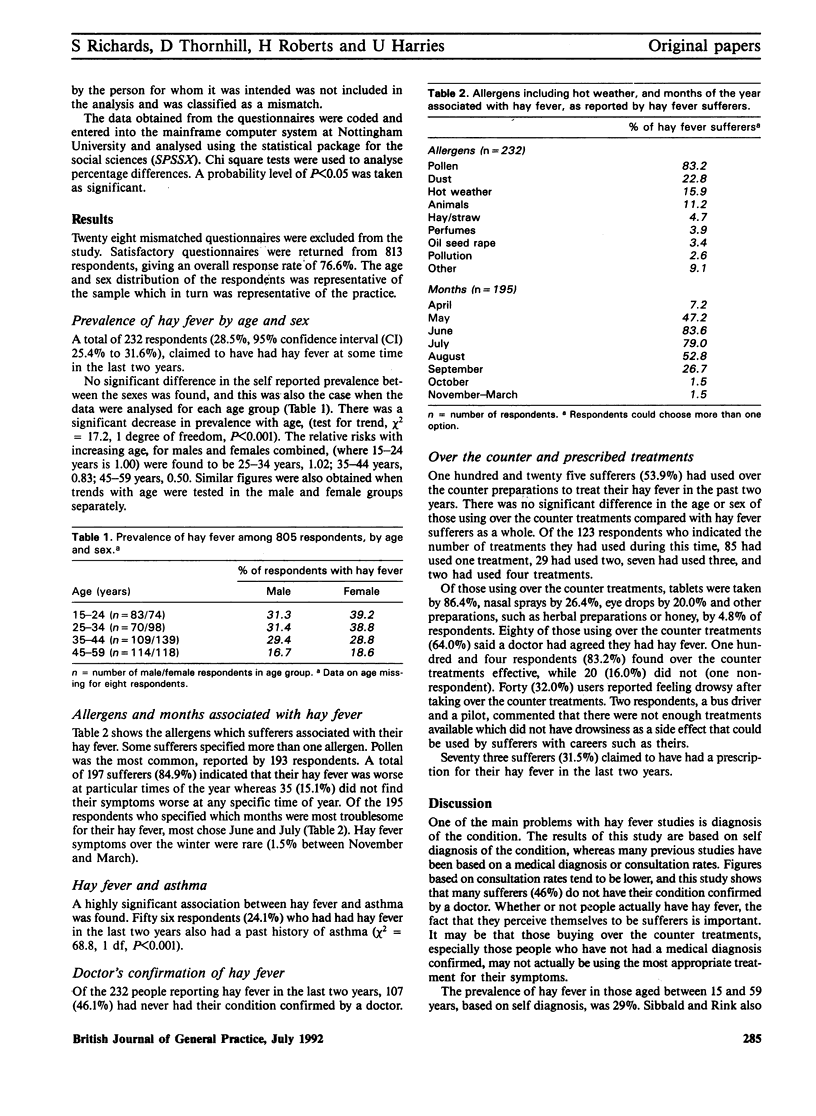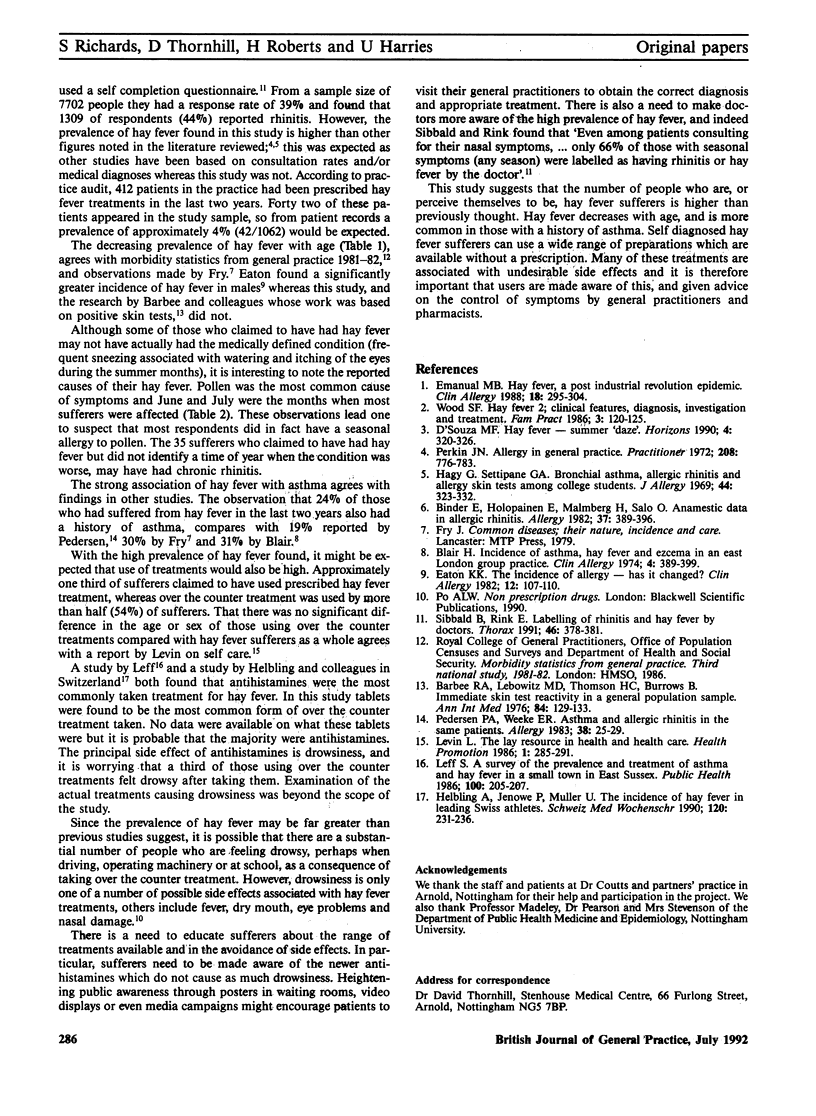Abstract
Little is known about the number of people who perceive themselves to be sufferers of hay fever. This study investigated how many people between the ages of 15 and 59 years perceived themselves to be hay fever sufferers and how they treated themselves. The study was carried out in a general practice in Arnold, Nottingham, using a postal questionnaire, to which the response rate was 77% from a sample size of 1062. Of the 813 respondents, 232 (29%) claimed to have had hay fever within the last two years. The prevalence of hay fever decreased significantly with age, and was associated with a history of asthma. One hundred and twenty five sufferers (54%) used over the counter treatments for their hay fever, and one third of these said that they felt drowsy after using them. These findings point to the need for general practitioners to be aware that a number of people, more than has been indicated by previous surveys, perceive themselves to be hay fever sufferers and are prepared to treat themselves using over the counter preparations.
Full text
PDF


Selected References
These references are in PubMed. This may not be the complete list of references from this article.
- Barbee R. A., Lebowitz M. D., Thompson H. C., Burrows B. Immediate skin-test reactivity in a general population sample. Ann Intern Med. 1976 Feb;84(2):129–133. doi: 10.7326/0003-4819-84-2-129. [DOI] [PubMed] [Google Scholar]
- Binder E., Holopainen E., Malmberg H., Salo O. Anamnestic data in allergic rhinitis. Allergy. 1982 Aug;37(6):389–396. doi: 10.1111/j.1398-9995.1982.tb02317.x. [DOI] [PubMed] [Google Scholar]
- Eaton K. K. The incidence of allergy--has it changed? Clin Allergy. 1982 Jan;12(1):107–110. doi: 10.1111/j.1365-2222.1982.tb03132.x. [DOI] [PubMed] [Google Scholar]
- Emanuel M. B. Hay fever, a post industrial revolution epidemic: a history of its growth during the 19th century. Clin Allergy. 1988 May;18(3):295–304. doi: 10.1111/j.1365-2222.1988.tb02872.x. [DOI] [PubMed] [Google Scholar]
- Hagy G. W., Settipane G. A. Bronchial asthma, allergic rhinitis, and allergy skin tests among college students. J Allergy. 1969 Dec;44(6):323–332. doi: 10.1016/0021-8707(69)90024-0. [DOI] [PubMed] [Google Scholar]
- Helbling A., Jenoure P., Müller U. Häufigkeit von Heuschnupfen bei Schweizer Spitzensportlern. Schweiz Med Wochenschr. 1990 Feb 17;120(7):231–236. [PubMed] [Google Scholar]
- Leff S. A survey of the prevalence and treatment of asthma and hayfever in a small town in East Sussex. Public Health. 1986 Jul;100(4):205–207. doi: 10.1016/s0033-3506(86)80067-1. [DOI] [PubMed] [Google Scholar]
- Levin L. The lay resource in health and health care. Health Promot. 1986;1(3):285–291. doi: 10.1093/heapro/1.3.285. [DOI] [PubMed] [Google Scholar]
- Pedersen P. A., Weeke E. R. Asthma and allergic rhinitis in the same patients. Allergy. 1983 Jan;38(1):25–29. doi: 10.1111/j.1398-9995.1983.tb00852.x. [DOI] [PubMed] [Google Scholar]
- Perkin J. M. Allergy in general practice. Practitioner. 1972 Jun;208(248):776–783. [PubMed] [Google Scholar]
- Sibbald B., Rink E. Labelling of rhinitis and hayfever by doctors. Thorax. 1991 May;46(5):378–381. doi: 10.1136/thx.46.5.378. [DOI] [PMC free article] [PubMed] [Google Scholar]
- Wood S. F. Hay fever. 2. Clinical features, diagnosis, investigation and treatment. Fam Pract. 1986 Jun;3(2):120–125. doi: 10.1093/fampra/3.2.120. [DOI] [PubMed] [Google Scholar]


